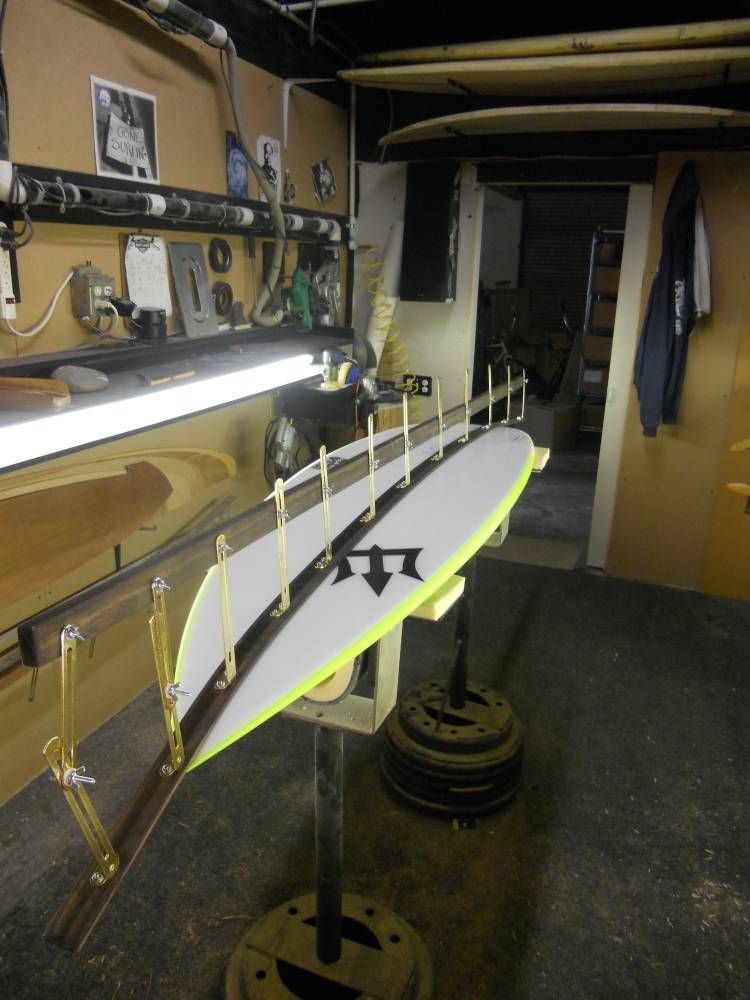Shapa, Brewer worked off a three-stage rocker for years.
Flatter mid section, he called the sweet spot.
Lots of rocker combo’s out there now.
Excellerated, continuous, etc.
Lots to learn.
Do your homework.
**Rocker**
The rocker is the bottom curve of the board from the nose to the tail. It is the curvature of the surfboard from a profile or side angle. The basic reason for this curve is to fit the surface area of the board to the curvature of a wave face. If your surfboard had a straight rocker, you are more likely to pearl when dropping into the steep part of the wave.The amount of curve in the rocker will affect the turning or carving ability of the board. Performance shortboards typically have more rocker to give a smaller turning radius. It is also more suitable for getting into steep and hollow waves.
Surfboards with low rocker keep more surface area on top of the water, allowing the rider to generate more speed when paddling and surfing. This is in contrast to boards with more rocker, which have less surface area on the water and, thus, do not pick up speed as easily. Longboards are designed to catch waves with ease and typically have lower rocker than shortboards. The low rocker makes longboards more suitable for slow, mushy waves as opposed to steep hollow waves.
Nose Rocker
The nose rocker is curved near the front of the board. Similar to the front of a boat’s hull, this is designed to keep you from digging into the bumps of the wave. As a surfer drops into a wave, the curvature of the nose will help to keep the board on top of the wave’s surface. Otherwise, the board’s nose may dig into the water and pearl.
Tail Rocker
The bottom curve at the back end of the board is designed for tail kick. With more tail curve, the easier the board squats. This loosens the board up to change directions and making more pivotal turns. Tail kick also makes it easier to drop into waves without pearling because the upwards lift of the tail isn’t forcing the nose downwards as much as a straight tail rocker would.
While a board with more tail rocker will offer increased control, this design will slow the board down. The less curve in the tail rocker, the easier the board will plane, making the board faster.
